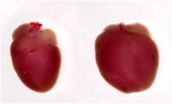(Press-News.org) In Spain it is relatively common to come across petrol stations surrounded by houses, particularly in urban areas. Researchers from the University of Murcia (UM) have studied the effects of contamination at petrol stations that is potentially harmful to health, which can be noted in buildings less than 100 metres from the service stations.
"Some airborne organic compounds – such as benzene, which increases the risk of cancer – have been recorded at petrol stations at levels above the average levels for urban areas where traffic is the primary source of emission", Marta Doval, co-author of the study and a researcher at the UM, tells SINC.
The study, which has been published in the Journal of Environmental Management, shows that the air at petrol stations and in their immediate surroundings is above all affected by emissions stemming from evaporated vehicle fuels (unburnt fuels from fuel loading and unloading operations, refuelling and liquid spillages).
The research team measured the levels of "typical traffic" pollutants in different parts of the urban area of Murcia, and calculated the quotients for the levels of an aromatic compound (benzene) and a hydrocarbon (n-hexane) at three Murcia petrol stations (near the petrol pumps and surrounding areas) to find the distance at which the service stations stop having an impact.
"In the three cases studied we obtained maximum distances of influence of close to 100 metres, although the average distance over which this contamination has an effect is around 50 metres", Enrique González, the UM researcher who led the research team, tells SINC.
However, the distances depend on the number of petrol pumps, the amount of fuel drawn from them, traffic intensity, the structure of the surroundings, and weather conditions.
According to the researcher, "the more contaminated the zone surrounding the petrol station as a result of other causes (traffic), the lower the impact of the two pollutants at the service station". If traffic in the area surrounding the petrol station is very intense, and exceeds the emissions from the station itself, pollution at the service station is "overlapped and goes unnoticed" over short distances.
Advice for new constructions
The research study shows that a "minimum" distance of 50 metres should be maintained between petrol stations and housing, and 100 metres for "especially vulnerable" facilities such as hospitals, health centres, schools and old people's homes. "Ideally, the 100 metre distance should be respected in plans for building new houses", says Doval.
The researchers propose carrying out this study at new construction areas in which it is planned to build these kinds of facilities. However, petrol stations are not the only source of emission of these pollutants.
"There is not much use in protecting people from petrol stations if the other sources of emission (above all traffic and industries near population hubs) are not controlled or reduced", stresses González.
INFORMATION:
References:
Morales Terres, Isabel M.; Doval Minarro, Marta; González Ferradas, Enrique; Baeza Caracena, Antonia; Barbera Rico, Jonathan. "Assessing the impact of petrol stations on their immediate surroundings" Journal of Environmental Management 91(12): 2754-2762, december 2010.
Petrol stations pollute their immediate surroundings
2011-02-05
ELSE PRESS RELEASES FROM THIS DATE:
Scientific research reveals brain alterations linking omega 3 deficit with depression
2011-02-05
The link between deficits of omega-3 poly-unsaturated fatty acids (AGPO-3) and the onset of depressive disorders is not new in the medical field. However, what has not been known until now is the brain mechanism by which diet can condition mental health to a certain extent. Research undertaken by scientists in Bordeaux (France) and at the Faculty of Medicine and Odontology of the University of the Basque Country (UPV/EHU) and published in Nature Neuroscience, provides new clues to understanding this phenomenon.
The name of the research work, 'Omega-3 nutritional deficiencies ...
New images show cloud exploding from Sun ripples like clouds on Earth
2011-02-05
Physicists, led by a researcher at the University of Warwick, studying new images of clouds of material exploding from the Sun have spotted instabilities forming in that exploding cloud that are similar to those seen in clouds in Earth's atmosphere.
These results could greatly assist physicists trying to understand and predict our Solar System's "weather".
The researchers, led by of the Centre for Fusion Space and Astrophysics, at the University of Warwick's Department of Physics, made their discovery when examining new images of clouds of material exploding from ...
Sugar boost for Oxfordshire scientists who are planning ahead for future medicines
2011-02-05
Scientists continuing to investigate a 50 year mystery have discovered another vital clue that could help pave the way for improved medicines. The results feature in a special edition of Nature celebrating the International Year of Chemistry. The findings reveal an important insight into the way carbohydrates (sugars) bond and this will influence the way drugs are designed in the future.
Using specialist laser equipment from the EPSRC-funded Laser Loan Pool managed by STFC's Central Laser Facility, Professors John Simons and Ben Davis together with co-workers from the ...
Tipping points -- the future of the pharmaceutical industry
2011-02-05
This declining trend is blamed on a failure of innovative drive in the industry, failure of the UK to support basic research, failure of venture capital to invest in early stage research, or failure of the Health Service to provide smart procurement.
A research centre funded by the Economic and Social Research Council (ESRC) shows that radical reform of the drugs industry regulatory system must be an important part of the solution to ensure a productive and profitable pharmaceutical sector, both globally and in the UK.
Researchers from the ESRC's Innogen centre have ...
Massive Daphnia genome leads to understanding gene-environment interactions
2011-02-05
DURHAM, N.H. – From an environmental perspective, Daphnia pulex -- the waterflea – is the best-studied organism on the planet. Scientists know how this species responds to pollution, predators, day and night, making it an important model for ecological and evolutionary research. Its genome, however, remained elusive, limiting understanding of how the environment and genes interact.
Until now. An international team of researchers comprising the Daphnia Genomics Consortium, including four from the University of New Hampshire's Hubbard Center for Genome Studies, has described ...
Emergency detection systems for senior citizens
2011-02-05
Ms. K. is vision-impaired and can't get around very well any more. Still, the 80-year-old, who lives alone, has no intention whatsoever of moving to a retirement home. Most elderly people think the same way. They want to stay in their accustomed surroundings as long as possible, where they can lead an autonomous life. What many fail to realize is that they are risking their health in the process. Cardiovascular problems are more frequent among the elderly, and the risk of falling is more prevalent: one person in three above the age of 65 falls once a year; among those over ...
Recipe for family mealtimes calls for 3 ingredients in the right amounts
2011-02-05
URBANA – A University of Illinois scientist reports that family mealtimes that contain three ingredients in the right amounts can improve the quality of life in children who have chronic asthma.
"Family mealtimes, when they're done right, are linked to many benefits for children, including a reduced risk of substance abuse, eating disorders, and obesity. In this study, we've put these mealtimes under a microscope so we can see minute by minute which factors deliver these healthy outcomes," said Barbara H. Fiese, director of the U of I's Family Resiliency Center.
Which ...
Improving care for bowel cancer patients
2011-02-05
Rainer Kube and his working group report in the current issue of Deutsches Ärzteblatt International (Dtsch Arztebl Int 2011; 108[4]: 41-6) on new treatment strategies in patients with colon cancer.
The findings of multicenter observational studies are a good basis for improvements to overall quality of patient care. Against this background, from 2000 to 2004 Kube and his coauthors collected data on over 31 000 patients in 346 German hospitals. From this data pool they extracted statements about the quality of care. They discovered, for example, that colonoscopy screening ...
Unemployment: A health risk
2011-02-05
Compared to people in employment, men and women who are unemployed suffer more often and longer from both physical and emotional complaints. Why the un-employed should have health problems more often is discussed by Lars E. Kroll and his coauthor in the current issue of Deutsches Ärzteblatt International (Dtsch Arztebl Int 2011; 4: 47-52), along with a report on the findings of the GEDA study.
The GEDA study (Gesundheit in Deutschland Aktuell, or Current Health in Germany) was carried out in 2008-2009 by the Robert Koch Institute. The results showed that unemployed people ...
Just in time for Valentine's Day: UNC researchers identify a gene critical for heart function
2011-02-05
CHAPEL HILL, N.C. – Everyone knows chocolate is critical to a happy Valentine's Day. Now scientists are one step closer to knowing what makes a heart happy the rest of the year.
It's a gene called DOT1L, and if you don't have enough of the DOT1L enzyme, you could be at risk for some types of heart disease. These findings from a study led by researchers at the University of North Carolina at Chapel Hill School of Medicine appear in the Feb. 1, 2011 issue of the journal Genes and Development.
The team created a special line of mice that were genetically predisposed to ...



